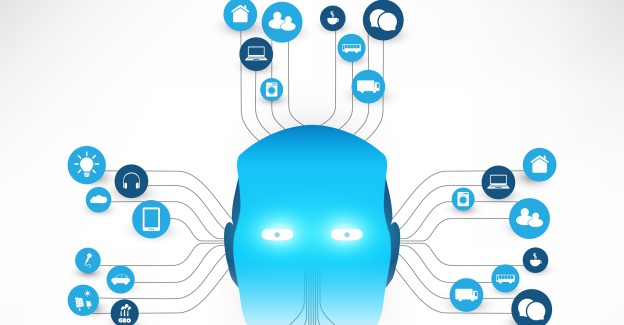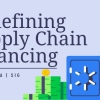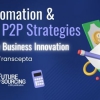When the Internet arrived, we said, “The world is no longer flat! This changes everything!” Then we went back to building centralized systems – something we still do today. Examples of centralized systems are our ERPs, enterprise payment systems and government platforms. Recent commercial examples include Google, Facebook and Uber.
A centralized system relies on one central body to be the holder of all records, the approver of all transactions and the intermediary between transacting parties – the sole holder of truth. As participants in this system, we rely on the centralized body and assume that it is benevolent. Of course, this is not always the case. A centralized body can be corrupted and actors can misuse their power.
Take the recent news about Facebook selling our private data. Or the fact that Google search results may promote results benefiting them or their paying customers rather than users. A centralized solution introduces conflicts of interest and therefore need to be regulated and controlled.
A centralized party may ensure ‘order’ but it is motivated by its own priorities and interests. And the price of this order includes extra costs, delays and the ever-present risk of corruption. One way to free ourselves from the constraints of this paradigm is to opt for a decentralized system.
In a decentralized system, participants transact directly in a ‘peer-to-peer’ model, rather than via someone else. The verification of the transactions is managed by the larger community in a voting system. The members of the community, called ‘miners’ in the case of the blockchain, have to agree that each contract or transaction is correct.
A decentralized system enables:
- Reduced cost structure
- Near-instant transactions
- Embedded verification (i.e., transactions on the blockchain can’t be compromised – the chain itself is the holder of truth)
As a result, decentralized systems are largely self-governing, and because they do not have ‘interests’ independent of their users, they require less regulation and oversight.
Wait a minute, you may say. Look at Mt. Gox, the Bitcoin exchange that was hacked in 2011. Doesn’t that show that blockchain isn’t any safer than personal information on Facebook? In this case, it was the Bitcoin exchange – Mt. Gox – that was hacked, not the blockchain itself. A blockchain has never been successfully hacked. They have, so far, proven to be the ultimate ‘Truth Machines.’
Can it be that the viability of decentralized systems will spark a bigger revolution than the Internet? Absolutely. Decentralized systems allow communities to be self-governing without the overhead burden of a central authority and bureaucracy (an example is Uber, which is now being challenged by startups on the blockchain).
For instance:
- Payments won’t require the overlay of costly bank systems. Parties will transact directly with each other
- Online interactions and connectivity will transcend global borders. Just think of how Skype changed the telecom industry by killing roaming costs and long-distance fees
- Communities can vote together and implement changes through so called ‘smart contracts’ without having a central body to do it for them. Examples here are the sale of properties
In a few years, billions of devices will be directly connected via the Internet of Things (IoT). How will they transact? Will they need to go through centralized systems or will they use decentralized, peer-to-peer systems? This is a critical question to answer if we are to ensure that decentralized systems achieve their full potential rather than becoming ‘new’ centralized systems. Other questions and possible scenarios include:
- Is a centralized model even possible in the IoT? Imagine the complexity of organizing all the central systems we’d need…who would govern them?
- Would we have one system for all cars and another for all trucks? How would these central systems communicate and who would build, run and pay for them? What if a conflict of interest is uncovered? Who would mediate and decide?
As soon as we ask the questions about cost and decision making, we know that a centralized system structure will hardly work. It will be a logistical nightmare. All ‘things’ have to transact peer-to-peer in a system that accurately and transparently records and stores all transactions. The IoT will require a decentralized solution in order to work. This is why blockchain is rightly being characterized as a bigger revolution than the Internet.
This time, we must say, “The world is no longer flat! This changes everything!” And then proceed to demand and build a whole new kind of system.
Note: For more information on this topic, read “The Truth Machine – The Blockchain and the Future of Everything” by Michael Casey and Paul Vigna.

This article was written in collaboration with Kelly Barner owns, manages, and edits Buyers Meeting Point. Since 2009 she has covered procurement news, events, publications, solutions, trends, and relevant economics at Buyers Meeting Point. Kelly has several regular columns throughout the industry, and in the summer of 2016 was appointed to become the Business Survey Chair for the ISM-New York Report on Business. Kelly has her MBA from Babson College as well as an MS in Library and Information Science from Simmons College. Kelly has co-authored three books: ‘Supply Market Intelligence for Procurement Professionals: Research, Process, and Resources’ (2014), ‘Procurement at a Crossroads: Career Impacting Insights into a Rapidly Changing Industry’ (2016), and 'Finance Unleashed: Leveraging the CFO for Innovation' (2017). In 2017, Kelly co-founded Palambridge with Phil Ideson (Art of Procurement).









